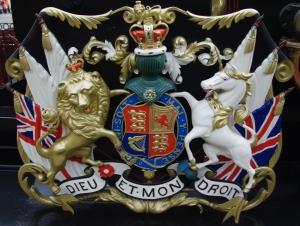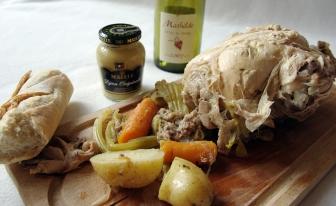
Kings have always had an interesting relationship to food. Poultry, fish, sea food, vegetables, pies, cakes, puddings were everywhere, in every corner. Even at the dawn of their deaths, kings were served an indecent amount of food that would have fed an entire city.
Food was of course synonym of status and wealth. The more, the better. Under Louis XIV’s reign, feasts were usually made of 5 different courses of 50 meals each. Every dinner included four soups, an entire pheasant and partridge, a big plate of salad, two hams, lamb with garlic sauce, a plate of cakes and, finally some more fruit and eggs. There was no glassware on the tables; servants were in charge of filling glasses in the kitchen and serving them piecemeal.
In the XVIIIth century, the king started looking for more intimacy and would rather share his meals with close friends and mistresses. Louis XV was the first king in 1735 to build a dining room in his own apartments and feasts only took place once or twice a week.
Later on, Louis XVI chose a more opulent way of life and organised high class meals with everyone at court rushing to attend the event.
But food wasn’t just a way for the kings to nourish themselves. It was also a means to impress their guest and prove their power. Cooks and servants made continuous efforts in creativity and ingenuity to honour the king and turn every meal into a visual show. Tudor feasts were gargantuan spreads of the worlds’s greatest culinary spectacles, combining the finest ingredients with innovation, fantasy and showmanship. New foods and spices were imported during this period to create unusual and unique recipes that the guests would always remember. In his competition with the French King, Francis I, Henry VIII always made sure to provide a Tudor feast based on the high standards set by the French.
The pressure was sometimes so hard to handle that it ended in tragedy. During three nights and three days, the Prince of Condé hosted a non-stop feast including three sumptuous banquets to seduce Louis XIV and the 3000 members of the Versailles court. Vatel, an event organizer and famous baker, was in charge of making that event the most magnificent feasts ever organized. But as the fish delivery was delayed, he decided to commit suicide instead of losing his honour.
The kings’ feasts were in complete opposition with the famine that faced people. Nevertheless, some kings were concerned about the people. Therefore, Henry IV hoped to create a wealthy nation that every family could afford a stew once a week. The ‘Poule Au Pot’ became one of the traditional French Sunday dinners.
Poule au pot – 6 persons
1 celery stick
3 sprigs of thyme
3 bay leaves
1.4 kg organic chicken

900 cl of water
25 cl of white wine
4 carrots
3 leeks
12 small new potatoes
For the stuffing
200g of diced bacon
3/4 chicken livers
A few leaves of sage
One egg
2 cloves of garlic
6 shallots
A bunch of parsley
50g of breadcrumbs
In a food processor, blend the stuffing ingredients together.
Trim the chicken cavity of any excess fat and fill with the stuffing. Close up and secure with a couple of skewers or a poultry needle
Tie the celery stick, the thyme and the bay leaves together to make a ‘bouquet garni’.
In a large pot, put the chicken, the wine, the water, the bouquet garni, the carrots, the potatoes, the leeks. Cover and cook for an hour and a half.
To serve, remove the meat from the bones.
In a bowl, mix the creme fraiche with the cooking juice. Don’t make it too thick.
On a plate, place some chicken, stuffing, the vegetable and spoon over with the creamy juice.
